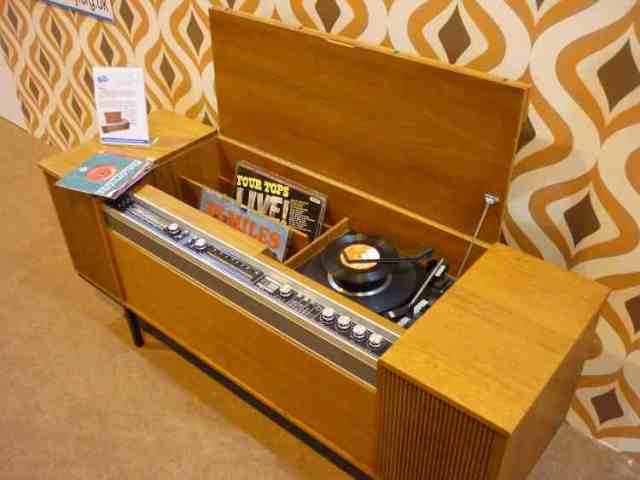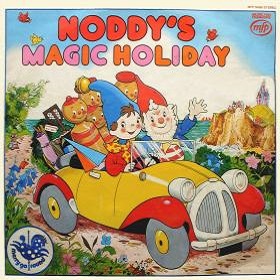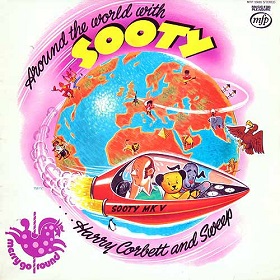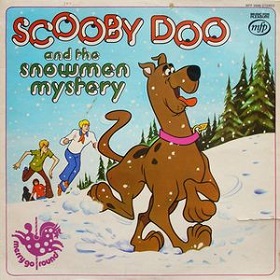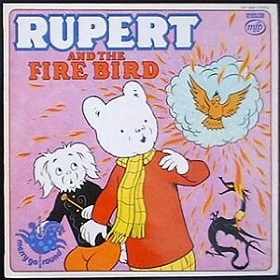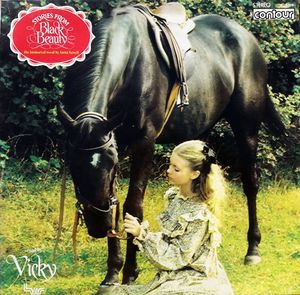“This one goes out to all the drunken romantics in the audience…”
Most people reading this will be very much aware that I am a huge fan of the rock band Marillion. What some of you won’t know is that for over a decade now, I’ve been the curator of what, for tradition’s sake, I continue to call the Marillion Christmas Poll.
In the late 90s, when the alt.music.marillion newsgroup was still a thing, one of the regulars – an excellent chap who went by the nom de plume of Wot Gorilla – decided to run a poll for the other regular users. He ran the poll just before Christmas, and spent a day or two drip-feeding us the results over the Christmas holiday period. We voted for our favourite ten songs, and rated the band’s records. As the results were fed back, it was a lot of fun, and also a great source of inspiration for discussion of the band’s music. Traffic on the newsgroup spiked. Friendships were made. It was so much fun that he did it again the following year.
Word spread. News of the poll made it outside the newsgroup and onto the two largest Marillion-based mailing lists, Freaks and The Opium Den. Then, once the band’s own website incorporated its own forum, it spread to there, too. It was at this point, shortly after the release of one of the band’s most beloved records, Marbles, that Wot Gorilla handed over the poll to me. It had become too time-consuming for him, and to be fair he’d been doing it for over half a decade by this point.
And so the poll has continued. A while after the band has released a new record, I run the poll again over the Christmas period. It’s run five times since Marbles was released, a little different each time as I tinkered with the various sections of the poll, collecting people’s opinions on the band’s side-projects, Fish’s solo output, people’s favourite live albums and so on.
Well, this year I’m running it again – possibly for the last time as it currently exists. The poll has always been conducted by email, but with the advent of increasingly sophisticated web-based data gathering, I suspect the poll will undergo another sizable metamorphosis soon. But I love running the poll the old-fashioned way. Receiving those emails – hundreds of them, these days – and picking through them, error-checking the votes, plumbing them into spreadsheets, reading people’s funny, sad, and often inspiring words about the band and their music, never fails to make me appreciate the band all the more. The poll invariably gets me listening intently to their back catalogue – I suspect I’m not alone – and I fall in love with the band’s music all over again. It never fails.
Last time, I’d created a Facebook page to act as a means of connecting with willing voters and notifying them of the results, and any problems along the way. Not everyone is on Facebook, though, or subscribed to the dear old Opium Den – a mailing list I created way back in 1999, not ever dreaming that more than a couple of dozen people would ever bother with it; we ended up with well over a thousand members. And so this year I’ve taken to Twitter to publicise the poll still further, and have elected to post voting instructions here on my blog, so even those who aren’t on Facebook or The Opium Den, or even Marillion’s own fan forum, can (hopefully!) join in the fun.
So here, without further ado, are the voting instructions for this year’s poll. If you love Marillion and their music, whether you’ve taken part in the past or not, please take part. Join in, send me your completed ballot. Trust me, it’s a lot of fun. And of course, if any of you feel like spreading the word about the poll to friends, that would be straight up awesome.
Right. With the poll due to open very shortly, it’s time to go over the voting procedure. That way, if there are any questions (or if I’ve cocked it up!), then there will be time to thrash things out before voting opens. It’s time to pull out that battered notepad filled with Marillion-related jottings, pull up that spreadsheet where you were attempting to work out your favourite Marillion songs to five decimal places, and start whittling that spear with which to impale the hapless administrator of THE MARILLION CHRISTMAS POLL 2016!
Please bear with me as I attempt in my own confused way to explain how the poll works. If you have any questions about the poll or how it works, please post them to the page, and I will do my best to answer them.
So what do you have to do?
OK. All you need to do is send an email to the Christmas Poll email address (xmaspoll AT btinternet DOT com), containing your virtual ballot paper. The poll falls into three distinct sections this year: a song poll, an album poll, and an ‘Other Music’ poll. The last of those sections is a new addition this year – I’m giving it a try to see how well it works. For the rest of this first post, we’re solely concerned with the song poll. It’s the most important, and also the most complicated part of the poll, so I try and spell it out as clearly as I can. Don’t worry, it’s not that complicated – but please read all the criteria carefully before entering your vote. Even if you’ve seen the poll before, there have been a few tweaks, so please don’t be tempted to simply re-submit the entry you made last time, if you took part in one of the previous polls.
Here’s an idea… SAVE THIS POST! PRINT IT OFF! Or maybe consider copying/pasting the song list into a spreadsheet – then it can do the maths for you as you edit. I’m all about making it easier for everyone, but I really don’t want to have to nit-pick peoples song votes because they don’t add up. That way lies madness and sedatives!
GENERAL INSTRUCTIONS
[1] VOTING FOR THIS POLL OPENS AT MIDNIGHT GMT ON SATURDAY, 1st OCTOBER 2016, AND IS OPEN UNTIL MIDNIGHT GMT ON FRIDAY, 23rd DECEMBER 2016. Any votes received before or after this period will be ignored. Results will be posted to the poll’s Facebook page/the Marillion Online forum/The Opium Den mailing list/this blog over the Christmas holiday period, my intake of Christmas ales permitting.
[2] All ballots MUST be mailed to the Christmas Poll email address given above, and MUST have the words “Marillion Christmas Poll 2016” in the subject header of the mail. It is extremely important that you put that subject header, ‘cos that’s what my filter operates on. PLEASE DO NOT SEND ANY BALLOTS TO THE FORUMS, LISTS, OR SOCIAL MEDIA SITES. (That way nobody will be unduly influenced by other ballots and the result hangs in the balance right up to the final announcement). PLEASE ALSO ENSURE THAT YOUR BALLOT INCLUDES YOUR VOTES FOR ALL THREE SECTIONS OF THE POLL!
[3] If you have any questions about how any of this works, leave me a message here and I will attempt to explain/reassure/hit you around the head with a blunt object/do the fish-slapping dance.
[4] Incorrectly completed ballots will be returned. You can fix them and re-submit them. It is, however, very likely that I (and others) will point and laugh at you. People have spelt “Marillion” wrong in the past, you know. They were named and shamed.
Alright. To the specific instructions…
Part 1: The Song Poll
Right, this is the biggest and most complex part of the poll! The songs that are eligible for this section meet the following criteria: this is a *track/songwriting* poll, which means that we’re not gonna worry about different versions of the song, like two different versions of, say, Memory Of Water – so apologies to those of you who are especially fond the ‘Big Beat’ version of that one.
I have also excluded the cover versions; with the exception of the studio recorded track, Sympathy (and Dry Land, which is on an album anyway). Last time around I included a handful of tracks from the EMI 2-disc remastered editions of the first 8 albums, but no bugger voted for them, really, so I’ve chosen to disregard them this time around. Ditto Margaret, which I included last time – even though it was a live recording – because it appeared on B’Sides Themselves. Well, I’m being a stickler for the word of law this time, so tough titty Madge! 😉 For the Brave fans, Marouatte Jam has been kicked into touch as well – no bugger voted for it last time out, and besides, it’s basically just an extended ‘live in the studio’ take of The Opium Den/The Slide anyhow.
Since not all fans have heard them and they’re not part of the band’s retail releases, I’ve excluded all the Web-only releases and Racket special releases etc as well. We’re only concerned about the FULL STUDIO ALBUMS & SINGLES AVAILABLE AT RETAIL here.
As usual, I was considering including the ‘hybrid’ songs on the Clutching At Straws bonus disc after several questions about their omission in previous polls. However, ultimately I felt it was redundant as they are essentially – for the most part – merely alternate versions of existing songs. So I’m sorry, but they’re still ineligible.
Less Is More gave me a bit of a headache, as it’s comprised almost entirely of alternate versions of existing songs. However, I am counting It’s Not Your Fault as eligible, as it is a studio recording and is not available in any other form.
The song section is interesting to score, designed in a way for those of you who have a hard time making decisions between best and worst. So how does this work?
[1] You have 150 points, which you must divide between your favourite songs. The advantage to this is that if you feel certain songs are equally as good, you can award them the same number of points.
[2] No selected song can receive more than 15 points. No single song can receive less than 1 point. Fractional point scores will be discarded. Fractions? Pah! Integers/whole numbers only, please!
[3] You can vote for UP TO 30 songs. However, you do not HAVE to vote for 30 songs – you can vote for fewer if you so desire. But you MUST vote for a MINIMUM of 20 songs. Alright?
[4] Any ties will be decided by which of the two tied songs had more total mentions, or, if they have the exact same number of total mentions, by which of the songs has the higher average score.
TIP: I find it helpful to narrow my list of songs down to 30, award them all a point, and then start increasing the scores slowly based on how I feel they compare with each other. If you award large points values (say, 12 or 15) here, there and everywhere, you’re going to run out of points very quickly, and it’ll
be hell trying to score everything.
WHAT YOU SHOULD END UP WITH:
- A list of at least 20 songs, but no more than 30.
- Each song in the list is given a point score of no less than 1 but no more than 15.
- The points, totaled up, should equal 150.
Here is a complete list of ELIGIBLE SONGS:
- Script For A Jester’s Tear
- He Knows You Know
- The Web
- Garden Party
- Chelsea Monday
- Forgotten Sons
- Market Square Heroes
- Three Boats Down From The Candy
- Grendel
- Charting The Single
- Assassing
- Punch And Judy
- Jigsaw
- Emerald Lies
- She Chameleon
- Incubus
- Fugazi
- Cinderella Search
- Pseudo Silk Kimono
- Kayleigh
- Lavender
- Bitter Suite
- Heart Of Lothian
- Waterhole (Expresso Bongo)
- Lords Of The Backstage
- Blind Curve
- Childhoods End?
- White Feather
- Lady Nina
- Freaks
- Hotel Hobbies
- Warm Wet Circles
- That Time Of The Night (The Short Straw)
- Going Under
- Just For The Record
- White Russian
- Incommunicado
- Torch Song
- Slainte Mhath
- Sugar Mice
- The Last Straw
- Tux On
- The King Of Sunset Town
- Easter
- The Uninvited Guest
- Seasons End
- Holloway Girl
- Berlin
- After Me
- Hooks In You
- The Space…
- The Bell In The Sea
- The Release
- Splintering Heart
- Cover My Eyes (Pain and Heaven)
- The Party
- No One Can
- Holidays In Eden
- Dry Land
- Waiting To Happen
- This Town
- The Rakes Progress
- 100 Nights
- How Can It Hurt
- A Collection
- I Will Walk On Water
- Sympathy
- Bridge
- Living With The Big Lie
- Runaway
- Goodbye To All That
- Hard As Love
- The Hollow Man
- Alone Again In The Lap Of Luxury
- Paper Lies
- Brave
- The Great Escape
- Made Again
- Winter Trees
- Gazpacho
- Cannibal Surf Babe
- Beautiful
- Afraid Of Sunrise
- Out Of This World
- Afraid Of Sunlight
- Beyond You
- King
- Icon
- Live Forever
- Man Of A Thousand Faces
- One Fine Day
- 80 Days
- Estonia
- Memory Of Water
- An Accidental Man
- Hope For The Future
- This Strange Engine
- Costa del Slough
- Under The Sun
- The Answering Machine
- Three Minute Boy
- Now She’ll Never Know
- These Chains
- Born To Run
- Cathedral Wall
- A Few Words For The Dead
- A Legacy
- Deserve
- Go!
- Rich
- Enlightened
- Built-in Bastard Radar
- Tumble Down The Years
- Interior Lulu
- House
- Between You & Me
- Quartz
- Map Of The World
- When I Meet God
- The Fruit Of The Wild Rose
- Separated Out
- This Is The 21st Century
- If My Heart Were A Ball It Would Roll Up Uphill
- Number One
- The Invisible Man
- Marbles I
- Genie
- Fantastic Place
- The Only Unforgivable Thing
- Marbles II
- Ocean Cloud
- Marbles III
- The Damage
- Don’t Hurt Yourself
- You’re Gone
- Angelina
- Drilling Holes
- Marbles IV
- Neverland
- The Other Half
- See It Like A Baby
- Thankyou Whoever You Are
- Most Toys
- Somewhere Else
- A Voice From The Past
- No Such Thing
- The Wound
- The Last Century For Man
- Faith
- Circular Ride
- Say The Word
- Dreamy Street
- This Train Is My Life
- Essence
- Wrapped Up In Time
- Liquidity
- Nothing Fills The Hole
- Woke Up
- Trap The Spark
- A State Of Mind
- Happiness Is The Road
- Half Full Jam
- Thunder Fly
- The Man From The Planet Marzipan
- Asylum Satellite #1
- Older Than Me
- Throw Me Out
- Half The World
- Whatever Is Wrong With You
- Especially True
- Real Tears For Sale
- It’s Not Your Fault
- Gaza
- Sounds That Can’t Be Made
- Pour My Love
- Power
- Montreal
- Invisible Ink
- Lucky Man
- The Sky Above The Rain
- El Dorado
- Living In F E A R
- The Leavers
- White Paper
- The New Kings
- Tomorrow’s New Country
VERY IMPORTANT – PLEASE NOTE! I will NOT accept votes for suites of songs (i.e. you can’t vote for the This Town trilogy as one choice. It’s three tracks, folks! Same with the opening trilogy of tracks on Clutching At Straws!). So there.
I’ll tackle the other (much easier) sections in the next entry… In the meantime, questions, error-checking and abuse are welcome! 🙂

